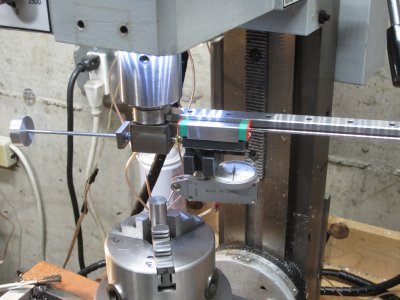- Joined
- Jul 28, 2017
- Messages
- 2,379
This is my version of a low-profile centering tool, prompted by a recent discussion on the subject:

It's based on a linear slide I bought on ebay. The slide is adjusted using 4-40 all thread. I made a simple anti-backlash setup with a threaded plate, a little spring and an anti-rotation screw. The other end of the all-thread drives the slider. That side has two miniature thrust bearings to eliminate backlash.
The tool is held by a 3/4" R8 collet, which, in turn, provides the greatest amount of Z motion. It will be a little unhandy to use because I rarely use end mills that large -- so I probably will make a piece that will fit my most-commonly used end mill collet size.

It's based on a linear slide I bought on ebay. The slide is adjusted using 4-40 all thread. I made a simple anti-backlash setup with a threaded plate, a little spring and an anti-rotation screw. The other end of the all-thread drives the slider. That side has two miniature thrust bearings to eliminate backlash.
The tool is held by a 3/4" R8 collet, which, in turn, provides the greatest amount of Z motion. It will be a little unhandy to use because I rarely use end mills that large -- so I probably will make a piece that will fit my most-commonly used end mill collet size.

